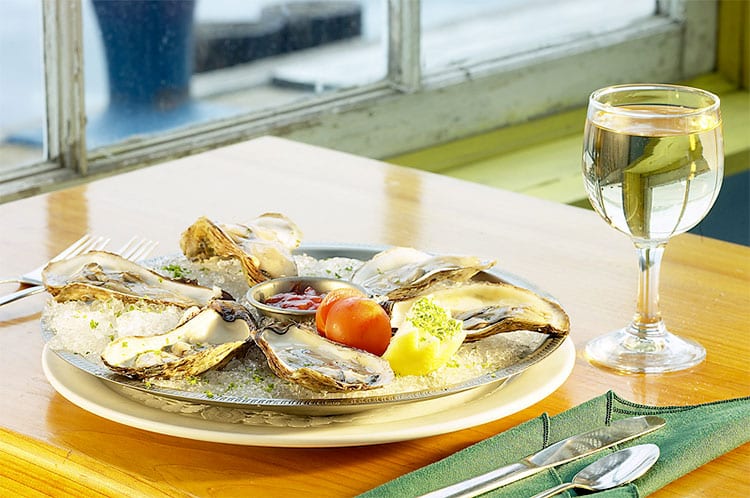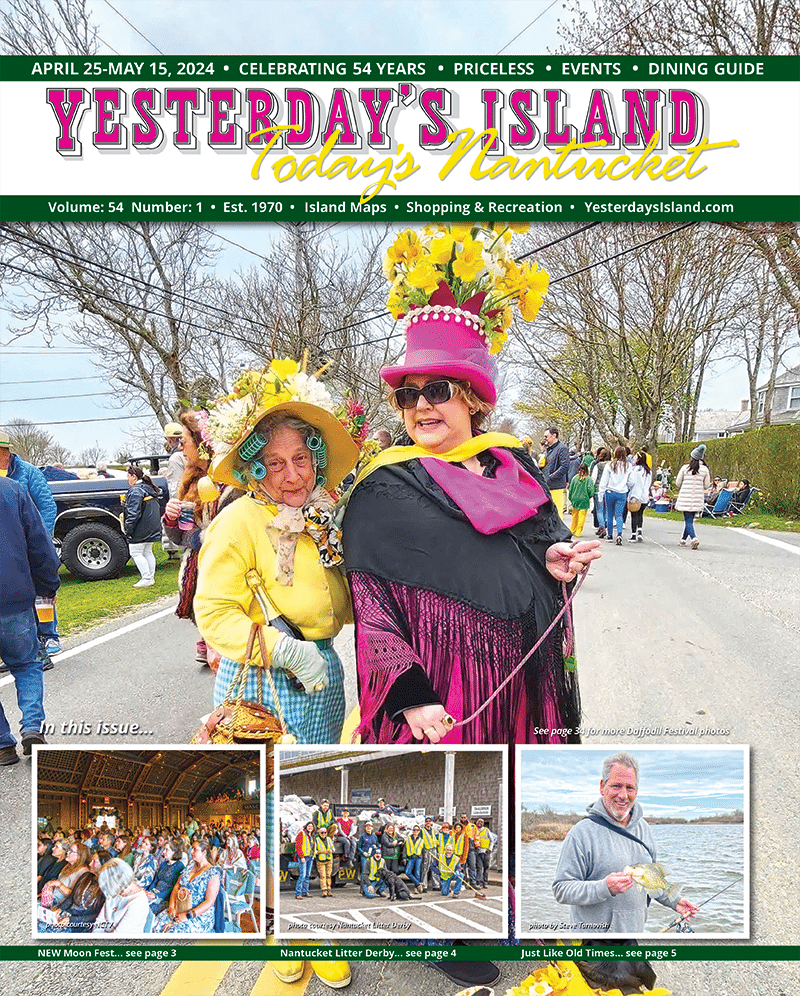• by Jenny Benzie – Advanced Sommelier and Proprietress of Épernay Wine & Spirits •
Nothing makes your mouth zing, lips smile and heart warm than the perfect food and wine pairing. Just like your yoga practice, it takes a lot of time and effort to get it right. Luckily, there are some classic go-to pairings that are part of the core foundation of this practice.
Since it’s summertime on the island, let’s start our practice with a refreshing, crisp, dry white wine: Chablis. We aren’t talking about the Carlo Rossi jug kind that labels itself “California Chablis” in an effort to ride the coattails of this famous wine region. We are talking about the real deal made from 100% Chardonnay in Burgundy, France. In France, the law dictates that wine is named after the place it originated and not the grape varietal, as is seen on most American bottles.
Located a little over 100 miles southeast of Paris, Chablis is a small village that has given its name to a larger wine growing region. This area is considered the northernmost wine district of Burgundy, although the climate and characteristics of Chablis more closely resemble that of Champagne. Champagne is located about 30 miles away; and Beaune, sister city to Nantucket and the heart of Burgundy, is 100 miles south.
Vineyard classification in Chablis is designated by the governmental agency in charge of wine-related issues. Village level wines come from grapes grown lower on the hillsides and can be a blend of several different vineyard sources. These are the least expensive and considered everyday drinking wines. There are 40 vineyards in the region that can be designated Premier Cru. These wines, while not inexpensive, prove to be the best quality to price value ration. These can age for a few years or be consumed young. Vineyards to look out for: Vaillons or Montmains. Grand Cru is the highest level of vineyard classification. It contains only seven different vineyards, all of superior quality. These are by far the most expensive and can age effortlessly for 10 years, as they typically see some barrel maturation. Some excellent producers include Christian Moreau, Dauvissat, and Joseph Drouhin.
The terroir, or combination of special characteristics of the area that create a ‘sense of place,’ are a huge influence on the style of Chablis. The cool climate of the region helps to create crisp wines with more acidity and less concentrated fruity flavors than Chardonnay grown in warmer climates. In comparison to other white wines made in Burgundy, Chablis stylistically sees little to no oak with minimal barrel fermentation. These wines are also very mineral driven, due to the Kimmeridgian limestone and chalky soils. Millions of years ago, this area was an ocean floor; and today, it has many sea fossils. This eventually developed into a mineral-rich soil, which makes for these distinctive chardonnays.
For those that say they don’t like Chardonnay, this is the wine for you to try. The color of the wine should be clean and clear. Younger wines will have green and platinum highlights when looking through the glass. As the wine ages, the color will become lightly golden in color. You will discover hints of green apple, tart citrus, and lemongrass with striking minerality that is sometimes described as flinty or like crushed rock. The most distinctive quality to the wine is the high amount of acidity, which is determined by how much your mouth salivates when you take a sip of the wine. This sharpness, while on its own may seem harsh, is a perfect pairing with foods that can cut through that acidity and balance the taste of the wine.
Perhaps all of this combined is the reason that chilled Chablis and oysters are such a magical food pairing. Nantucket is home to several local oyster farmers who are practicing aquaculture. In the same concept of growing grapes, the oysters here are ‘aquafarmed’ to perfection and influenced by the ‘merroir’ of where they are raised. Oyster growth is influenced by its production, much the same way as grapes grown in a certain region. Whatever the farming practice, it is best to eat the oysters clean or with just a squeeze of lemon in order to taste this ‘sense of place’ where they are grown. Farmed oysters from Nantucket are one of the most sustainable seafood options out there. They can actually improve the quality of oceans and bays as they feed on particulate matter and nutrients that might otherwise pollute our waterways. The oysters’ shells can be recycled in your home garden or into the harbor to form ‘oyster reefs’ as is done here on Nantucket by the Town’s Natural Resource Department.
Whether you love them on the half shell or crispy and fried, another great thing about oysters is that they provide you with a host of health benefits of which most people are unaware. For starters, they are low in fat and calories, yet high in protein. They are an excellent source of many essential vitamins and minerals including iron, brain powering omega-3 fatty acids and calcium. They provide a high dosage of zinc, and are thought to be the aphrodisiac mineral that will keep your Vinyasa flow going.
And with farmed oysters, forget about the myth about not eating oysters in months that don’t have an ‘R.’ Oysters that grow wild typically spawn in the summer months, making them thin, somewhat milky and less tasty. With modern aquaculture techniques, the oysters are derived from seeds and don’t spawn, so the flavor of the oyster you are looking for only matures with time as the oyster continues to develop in its shell. The meaty brininess of an oyster screams for the minerality and acidity that is found in Chablis wines.
Hopefully this summer you will try this classic pairing for yourself. After sharing your practice of eating a couple dozen Nantucket oysters and polishing off a few bottles of Chablis, you can practice my favorite pose and perhaps the most important part of yoga: shavasana.
[Editors Note: If you’d like to try Jenny’s recommendations, stop by Epernay at 1 North Beach Street between the White Elephant and The Nantucket Hotel for a bottle of wine, then head over to Oyster Crackas on Toombs Ct. off Old South Road for fresh oysters they farm in Nantucket waters.]



